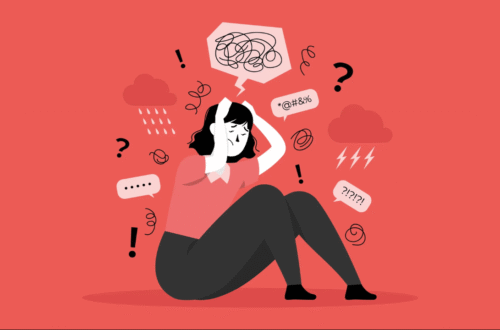The way we access and interact with news has undergone a dramatic transformation in the last two decades. The days of waiting for the morning newspaper or tuning into the evening broadcast are long gone. Today, social media platforms have taken center stage as the primary news source for millions of people around the world. Whether it’s breaking headlines on X (formerly Twitter), trending stories on Facebook, or viral videos on TikTok, news now travels faster than ever — and the way we consume it has changed fundamentally.
But what does this shift really mean? And how is it affecting the quality, trust, and overall experience of staying informed? Let’s dive into how social media is changing the landscape of news in real time.
Instant News, All the Time
One of the most visible effects of social media on news consumption is speed. Platforms like Instagram, Facebook, YouTube, TikTok, and Reddit make it possible for information to spread globally within minutes. News breaks on social media before traditional news outlets have time to write a headline.
This speed has its advantages. It means that during emergencies, disasters, or major world events, people can get updates instantly. Think of natural disasters, protests, celebrity deaths, or political crises — often the first reports now come from users on the ground with a smartphone, not from newsroom journalists.
But the constant flow of updates also creates a challenge. With so much content available at all times, it becomes difficult to distinguish verified facts from rumors, opinions, or outright misinformation. The urgency to “be first” can sometimes outweigh the need to “be right.”
The Rise of Citizen Journalism
One of the most powerful changes brought about by social media is the rise of citizen journalism. Regular people now act as reporters, often providing eyewitness accounts, videos, and photos from the scene of important events.
In places where press freedom is restricted, citizen journalism has become essential. During protests or conflicts, smartphone footage uploaded to social media has exposed injustices and spread awareness on a global scale.
However, citizen journalism doesn’t always follow the same ethical standards as professional reporting. Videos can be taken out of context, and eyewitnesses may misinterpret what they’re seeing. While citizen journalism adds valuable perspective, it also increases the risk of spreading half-truths or unverified claims.
Personalised News Feeds and Filter Bubbles
Social media platforms use algorithms to deliver news content based on your interests, habits, and interactions. While this can be convenient — giving you more of what you want to read — it also creates a filter bubble.
In a filter bubble, people are exposed mostly to content that aligns with their views, reinforcing existing beliefs and isolating them from alternative perspectives. This personalization can deepen political divisions and make it harder for people to engage in balanced discussions.
For example, someone who often reads about climate change or progressive politics will see more of that content, while someone with different interests may only see stories reinforcing their own worldview. This split in information exposure can shape public opinion in dramatically different directions.
The Viral Nature of Misinformation
One of the biggest concerns with social media as a news source is the spread of fake news and misinformation. Studies have shown that false information spreads more quickly on social platforms than the truth. Why? Because sensational stories get more clicks, shares, and emotional reactions.
Misinformation can have serious consequences. During elections, false claims can influence voting behavior. In a public health crisis, fake health advice can put lives at risk. The viral nature of social media gives misinformation a powerful reach that traditional media outlets struggle to match.
Social platforms have responded by introducing fact-checking labels, removing harmful content, and limiting the reach of questionable posts. But the challenge remains — once a false story is seen or shared, it’s hard to fully erase its influence.
Shorter Attention Spans, Bite-Sized News
Social media has changed not just where we get our news, but how we engage with it. Instead of long-form articles, many users now prefer short videos, headlines, memes, and infographics. This bite-sized format caters to short attention spans and mobile browsing habits.
While this makes news more accessible, it also risks oversimplifying complex issues. A thirty-second video can highlight a single moment without providing the full context. A viral meme might make a point, but it might also distort the facts.
As a result, people may feel informed without actually understanding the full story. This shift toward surface-level information can affect the quality of public debate and decision-making.
News Is Now Social
In the past, reading the news was a solitary activity. Today, it’s social. People comment on stories, share their opinions, and debate with others. News consumption has become interactive, with every story sparking a conversation.
This has opened new opportunities for engagement and learning. It allows individuals to share perspectives, correct misinformation, and crowdsource insights. But it also comes with the risk of toxic debates, echo chambers, and harassment. News has become part of the social media experience — emotional, opinion-driven, and sometimes chaotic.
Who Are the New Gatekeepers?
Traditionally, journalists and editors acted as gatekeepers of the news. They decided what stories were important and ensured accuracy before publication. On social media, those roles have shifted.
Now, algorithms decide what you see. Influencers and content creators often have more reach than newspapers. The line between journalism and content creation is becoming blurred. This shift has created more diverse voices, but it has also raised questions about accountability, transparency, and trust.
Who decides what stories trend? Who checks the facts? Who gets silenced or amplified? These questions are central to the way news functions in a social media-driven world.
The Evolving Role of Traditional News Outlets
Despite the rise of social media, traditional news outlets are still relevant. But they’ve had to adapt.
Many now use social media as a tool to distribute their stories and engage with readers. Journalists live-tweet from events, share behind-the-scenes content, and participate in conversations. Newsrooms also monitor social media for leads, public opinion, and breaking developments.
Still, they face challenges competing with the speed and volume of user-generated content. The economic model of journalism has also shifted, with declining ad revenue and rising competition for attention.
What Can You Do as a News Consumer?
In this rapidly evolving landscape, being an informed news consumer means being more thoughtful and selective about how you get your information. Here are a few simple habits to develop:
- Diversify your sources: Follow a variety of outlets to get multiple perspectives.
- Check before sharing: Verify headlines and sources before reposting.
- Be aware of bias: Understand that algorithms and platforms often shape what you see.
- Engage thoughtfully: Participate in discussions, but stay respectful and open-minded.
Conclusion
Social media has forever changed the way we consume news. It has made information faster, more accessible, and more interactive. But it has also introduced new risks — from misinformation and echo chambers to shortened attention spans and blurred lines between fact and opinion.
As consumers, we have a new responsibility. We must not only keep up with the news but also navigate it wisely. In a world where news is everywhere and always on, media literacy is more important than ever.
The future of news is being written right now — in tweets, stories, posts, and live streams. The question is not whether social media will shape it, but how we, as users, will shape it in return.
Keep an eye for more latest news & updates on TechIsFuture!





